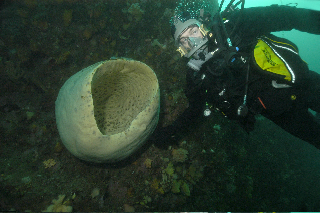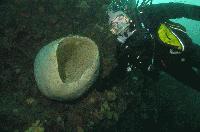Five New Species Off Antarctic
Posted by: Loren Coleman on December 1st, 2008

The first comprehensive “inventory” of sea and land animals around a group of Antarctic islands reveals a region that is rich in biodiversity and has more species than the Galapagos. The study provides an important benchmark to monitor how they will respond to future environmental change.
Reporting this week in the Journal of Biogeography, the team from British Antarctic Survey and University of Hamburg, describe how they combed the land, sea and shores of the South Orkney Islands, near the tip of the Antarctic Peninsula, using scuba divers and trawled nets to catch creatures as deep as 1500 metres.
Animals recorded were then checked with a century of literature and modern databases and the team concludes there are over 1200 known marine and land species. These include sea urchins, free-swimming worms, crustaceans and molluscs, mites and birds. Five were new to science.
Lead author Dr David Barnes from British Antarctic Survey (BAS) says:
“This is the first time anybody has done an inventory like this in the polar regions. It’s part of the Census of Marine Life (COML) – an international effort to assess and explain the diversity and distribution of marine life in the world’s oceans. If we are to understand how these animals will respond to future change, a starting point like this is really important.”
Author Stefanie Kaiser from University of Hamburg says:
“We never knew there were so many different species on and around these islands. This abundance of life was completely unexpected for a location in the polar regions, previously perceived to be poor in biodiversity.”
~ British Antarctic Survey Press Release
Giant sponge and a human diver.
About Loren Coleman
Loren Coleman is one of the world’s leading cryptozoologists, some say “the” leading living cryptozoologist. Certainly, he is acknowledged as the current living American researcher and writer who has most popularized cryptozoology in the late 20th and early 21st centuries.
Starting his fieldwork and investigations in 1960, after traveling and trekking extensively in pursuit of cryptozoological mysteries, Coleman began writing to share his experiences in 1969. An honorary member of Ivan T. Sanderson’s Society for the Investigation of the Unexplained in the 1970s, Coleman has been bestowed with similar honorary memberships of the North Idaho College Cryptozoology Club in 1983, and in subsequent years, that of the British Columbia Scientific Cryptozoology Club, CryptoSafari International, and other international organizations. He was also a Life Member and Benefactor of the International Society of Cryptozoology (now-defunct).
Loren Coleman’s daily blog, as a member of the Cryptomundo Team, served as an ongoing avenue of communication for the ever-growing body of cryptozoo news from 2005 through 2013. He returned as an infrequent contributor beginning Halloween week of 2015.
Coleman is the founder in 2003, and current director of the International Cryptozoology Museum in Portland, Maine.











very interesting. I believe these surveys and censuses are important to help us understand the oceans seas, and therefor help us avoid damaging them, or causing unknown side affects. Also, you never know what will come up when studying such creatures. You may find that there is a compound in a sea plant that may act as a new antibacterial, or a compound in a sea sponge, worm, or fish that may prevent hypothermia or frostbite, or a chemical that boosts the immunity system to kill cancer or fight off HIV/AIDS. Who knows what you may find?